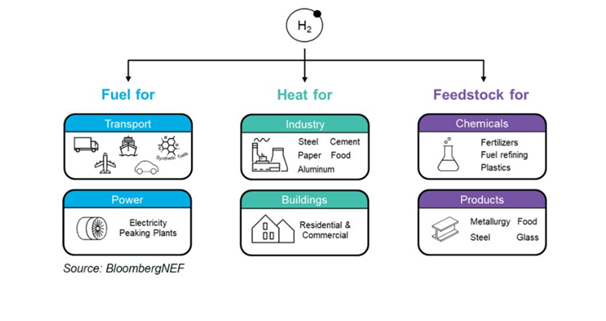National Green Hydrogen Mission
Context: The Central government on Wednesday approved the National Green Hydrogen Mission in a move aimed at making the country a hub to produce, utilise and export green hydrogen and its derivatives.
More on the news
- It is expected that the initiative will help reduce nearly 50 million tonnes (MT) of annual greenhouse gas emissions by 2030 and collectively reduce fossil fuel imports estimated at over ₹1 lakh crore.
- Cabinet approved Green Hydrogen Mission with the initial outlay of 19,744 crore.
- 17,490 for Strategic Interventions for Green Hydrogen Transition Programme (SIGHT) programme.
- 1,460 crore for pilot Projects
- 400 for Research and Development
- 388 crore towards other mission components.
Expected Mission Outcomes
- Development of green hydrogen production capacity of atleast 5 Million metric Tonne per annum
- It will add Renewable energy capacity of about 125 GW in the Country
- Over Eight lakh crore in total Investment
- Creation of over Six Lakh Jobs
- Abatement of nearly 50 MMT of Annual Green House gas Emissions.
Benefits of the Mission
- Export opportunity creation for green hydrogen and its derivatives
- It will help in decarbonisation of industrial, mobility, and energy sectors
- It will led to reduction in dependence on imported fossil fuels and feedstock
- Development of indigenous manufacturing capabilities
- The mission will allow the development of cutting edge technology and creation of employment opportunities in the energy sector.
What is Green Hydrogen?
- Green Hydrogencan be defined as hydrogen produced by splitting water into hydrogen and oxygen using renewable energy.
- This technology is based on the generation of through a chemical process known as electrolysis.
- This method uses an electrical current to separate the hydrogen from the oxygen in water.
- Hydrogen is the most abundant chemical element in nature andis a clean energy source that only emits water vapour and leaves no residue in the air, unlike coal and oil.
.
Advantages and Disadvantages of Green Hydrogen
Pro
|
Con
· Hydrogen is a highly volatile and flammable element and high safety measures are required to prevent leakage and explosions |
With India aiming to reach the goal of Zero Carbon goal by 2070, it is very important that such missions are initiated and their execution is properly done to lower the use of fossil fuel and increase renewable energy capacity.
| Other Types of Hydrogen
Brown Hydrogen It is produced by gasification, where carbonous materials are heated into a gas. The process involves turning coal into gas and produces large quantities of carbon emissions that are released into the atmosphere.
Grey Hydrogen It is created either from natural gas, or methane, using steam methane reformation. It do not capturing the greenhouse gases made in the process.
Blue Hydrogen In this process natural gas is split into hydrogen and CO2 either by Steam Methane Reforming (SMR) or Auto Thermal Reforming (ATR) but the CO2 is captured and stored.
|
| Practice Question
How National Green Hydrogen mission can Pave the way for India’s Goal of Carbon Neutrality? Discuss the main provisions of the policy. |







